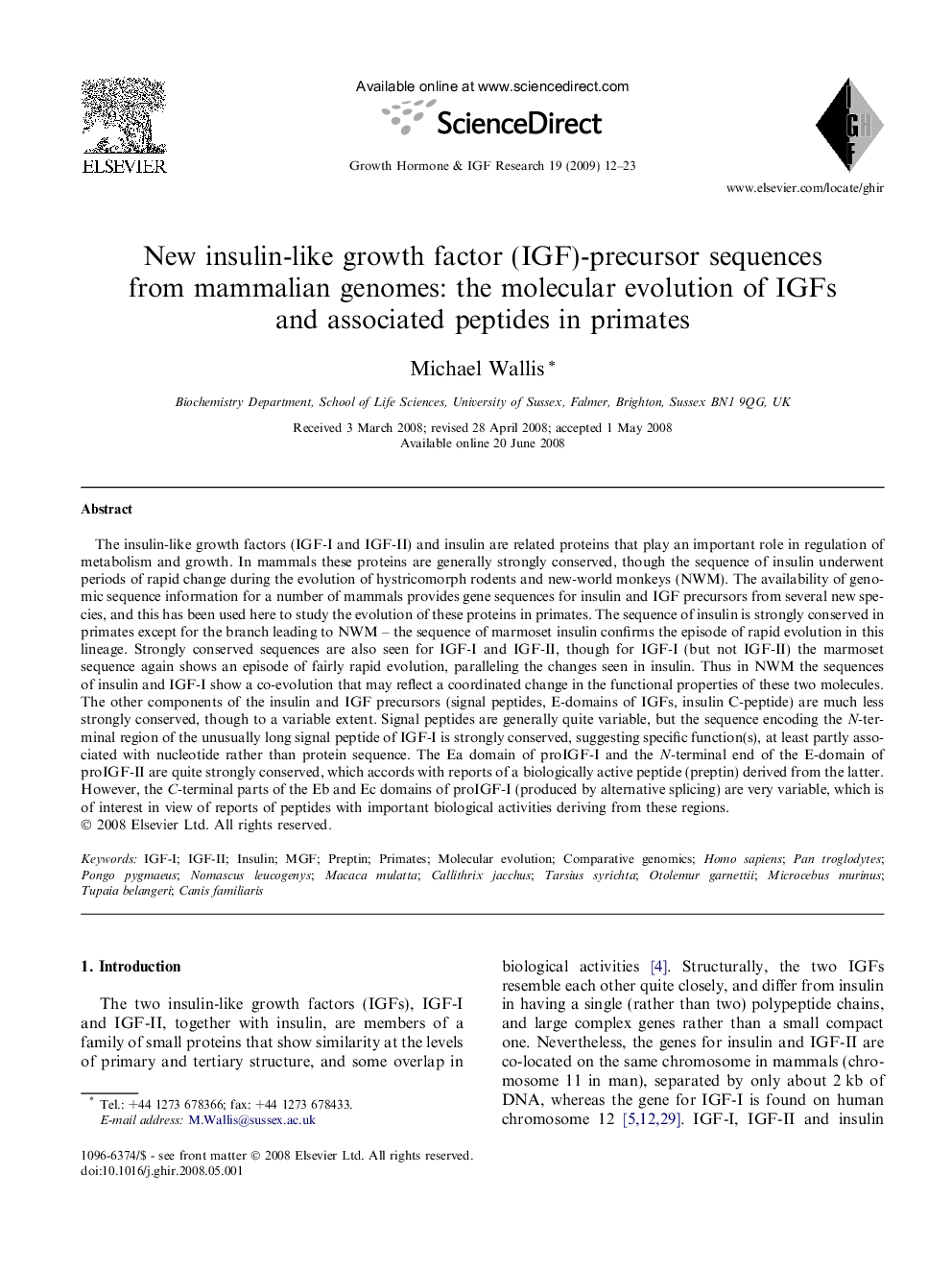| Article ID | Journal | Published Year | Pages | File Type |
|---|---|---|---|---|
| 2803121 | Growth Hormone & IGF Research | 2009 | 12 Pages |
The insulin-like growth factors (IGF-I and IGF-II) and insulin are related proteins that play an important role in regulation of metabolism and growth. In mammals these proteins are generally strongly conserved, though the sequence of insulin underwent periods of rapid change during the evolution of hystricomorph rodents and new-world monkeys (NWM). The availability of genomic sequence information for a number of mammals provides gene sequences for insulin and IGF precursors from several new species, and this has been used here to study the evolution of these proteins in primates. The sequence of insulin is strongly conserved in primates except for the branch leading to NWM – the sequence of marmoset insulin confirms the episode of rapid evolution in this lineage. Strongly conserved sequences are also seen for IGF-I and IGF-II, though for IGF-I (but not IGF-II) the marmoset sequence again shows an episode of fairly rapid evolution, paralleling the changes seen in insulin. Thus in NWM the sequences of insulin and IGF-I show a co-evolution that may reflect a coordinated change in the functional properties of these two molecules. The other components of the insulin and IGF precursors (signal peptides, E-domains of IGFs, insulin C-peptide) are much less strongly conserved, though to a variable extent. Signal peptides are generally quite variable, but the sequence encoding the N-terminal region of the unusually long signal peptide of IGF-I is strongly conserved, suggesting specific function(s), at least partly associated with nucleotide rather than protein sequence. The Ea domain of proIGF-I and the N-terminal end of the E-domain of proIGF-II are quite strongly conserved, which accords with reports of a biologically active peptide (preptin) derived from the latter. However, the C-terminal parts of the Eb and Ec domains of proIGF-I (produced by alternative splicing) are very variable, which is of interest in view of reports of peptides with important biological activities deriving from these regions.
